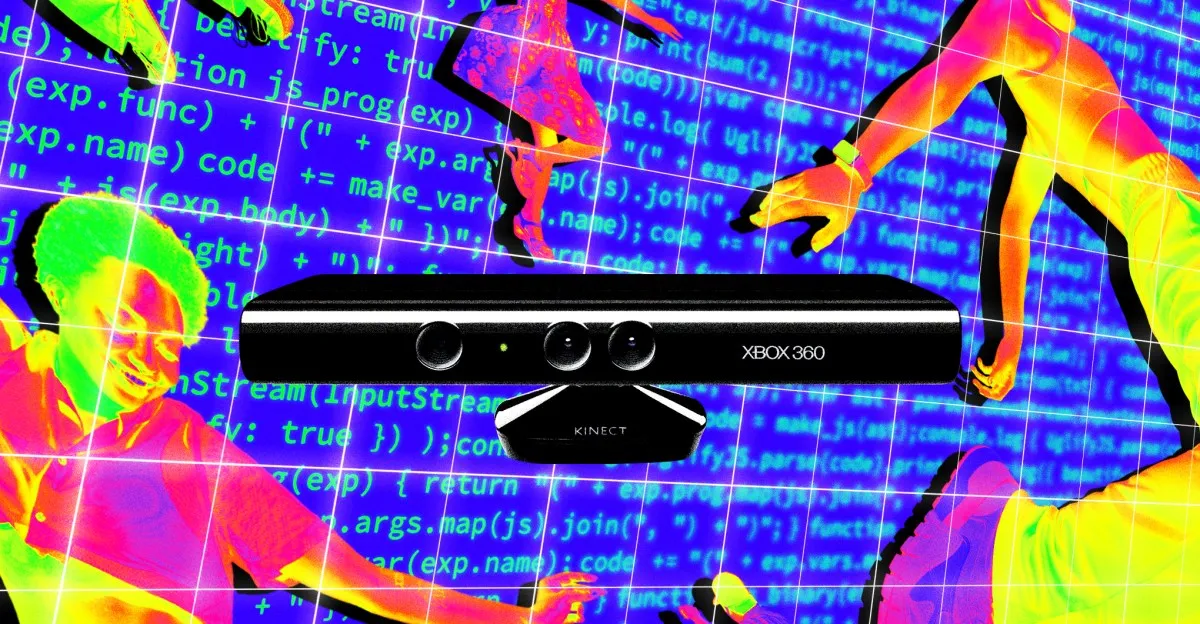
In 2010, when Microsoft launched the Kinect, it was marketed as a groundbreaking gaming device. Users could swing an imaginary lightsaber or throw a virtual football, with their movements reflected on screen in real-time. However, fifteen years later, the Kinect is often regarded as an expensive failure. Microsoft overestimated the demand for motion-based gaming, but interestingly, the Kinect proved to be revolutionary in ways far beyond gaming.
Today, we recognize the Kinect as much more than a gaming accessory. It became a pivotal tool in robotics, briefly ventured into the realm of adult entertainment, and even found its place as a popular gadget among ghost hunters. This transformation was largely due to an enthusiastic community of hackers who developed open-source drivers for the Kinect, liberating it from its ties to the Xbox 360 and paving the way for innovative applications across various fields.
“Technically, nothing the Kinect did was entirely new,” says Memo Akten, an artist and assistant professor at the University of California, San Diego. The Kinect utilized a small camera that projected a grid of infrared dots, measuring distortions to determine depth. This technology, a precursor to modern machine learning, allowed the device to recognize human movements and gestures. Previously, similar systems were prohibitively expensive, costing between $5,000 and $12,000. With the Kinect, Microsoft offered a version of this technology at just $150, making it accessible to a broader audience.
During its launch in 2010, Kyle Machulis, CEO of Nonpolynomial and founder of buttplug.io, recognized the Kinect as an opportunity to democratize advanced technology. Having previously worked on expensive mapping systems, he quickly saw the Kinect's potential for widespread use. On November 4th, he purchased a Kinect to reverse engineer it. Shortly after, New York-based DIY electronics producer Adafruit announced a bounty for anyone who could demonstrate the Kinect working on any operating system, offering a $1,000 prize that would later increase to $3,000.
The challenge was not as simple as dismantling the Kinect or plugging it into a PC. The communication protocol between the Kinect and Xbox 360 was unknown, requiring a USB sniffer—a device costing around $1,200—to capture the data exchanged. While some preliminary data could be gathered by connecting the Kinect to a PC, it was mostly unhelpful. Hackers worldwide were eager to participate, leading to a competitive atmosphere where the first to unlock the Kinect’s capabilities would gain significant recognition.
As the hacking community awaited the arrival of the sniffer, a user named “AlexP” released a video demonstrating control over the Kinect’s motor on a PC. This prompted a swift response from Microsoft, which denied the possibility of hacking the device while threatening legal action. However, they quickly shifted their stance when it became clear that the hacks did not threaten consumer privacy. AlexP soon followed up with another video showcasing depth and RGB images on a PC, marking a significant breakthrough for the community.
Rather than claiming the bounty, AlexP’s company, Code Laboratories, proposed a $10,000 fund in exchange for releasing the source code to the open-source community. This move sparked mixed reactions; some viewed it as a ransom while others saw it as a catalyst for innovation. The community rallied, motivated to outpace this new challenge. On November 9th, Adafruit finally released the logs captured by its sniffer, enabling the community to dive into reverse engineering the Kinect.
As hackers began sifting through the logs, 20-year-old Hector “marcan” Martin made significant progress, demonstrating RGB and depth on Linux within just 24 hours. This successful hack opened the floodgates for further developments. The OpenKinect community coalesced around a shared mission, with individuals contributing their expertise to refine the drivers and expand the Kinect’s functionality. By November 12th, Watson had successfully gotten the Kinect operational on a Mac, a feat celebrated by the community.
The initial open-source drivers, known as libfreenect, did not include body tracking, prompting Microsoft to release its own skeletal SDK in 2011. Nevertheless, the community continued to thrive, utilizing the raw depth data for creative projects ranging from interactive installations to applications in robotics and education. The Kinect became a versatile tool, enabling countless innovative uses that transcended its original gaming purpose.
As Microsoft shifted its focus to the next generation of Kinect technology, the original Kinect was eventually discontinued in 2017. However, its impact endured, influencing various devices, including those from Apple, which acquired the company behind the Kinect’s sensor technology, PrimeSense, in 2013. The Kinect's legacy remains evident in modern applications of facial recognition and 3D mapping.
Reflecting on the journey, Watson notes that the Kinect era was characterized by a sense of discovery and experimentation. “It was way more punk rock!” he remarks, emphasizing the community’s collective spirit during a time when the internet was still evolving. Today, the landscape has changed; technology is more product-focused, and the hacker culture has become less visible without a high-profile subject like the Kinect.
As the economic landscape surrounding AI continues to evolve, similar communities to OpenKinect may emerge, driven by the desire to open-source AI models. The Kinect introduced many to the possibilities of AI, and as technology progresses, it may become even more accessible. “AI is designed to streamline the creative process,” Watson explains, highlighting how advancements in AI are reshaping the way we interact with technology.
In summary, the Kinect's journey from a failed gaming device to a revolutionary technological tool illustrates the power of community-driven innovation. As we look to the future, the lessons learned from the Kinect experience may very well inspire the next wave of technological advancements.